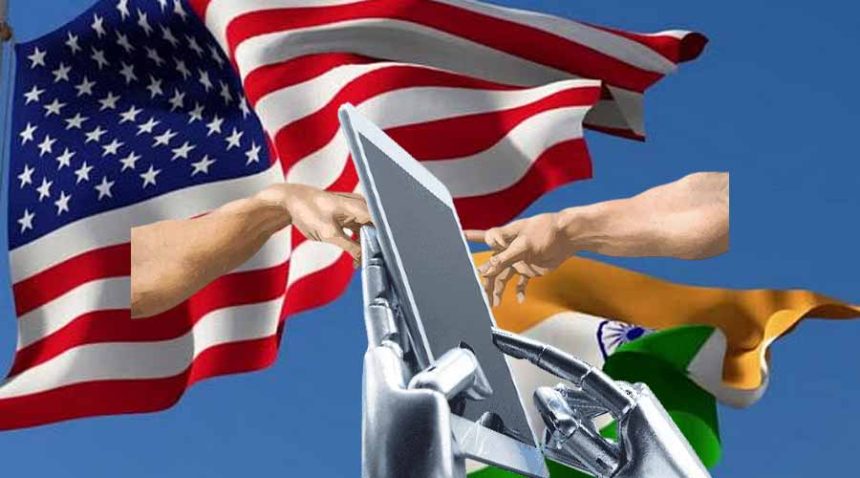US and India Set to Negotiate Key Trade Agreement Focusing on Technology and Tariffs
Under a proposed bilateral trade agreement, India plans to formally request that the United States ease export restrictions and provide more access to essential technologies. Through this strategic proposal, India aims to enhance its technological capabilities to match those of its US allies, Australia, Japan, and the United Kingdom.
India’s technological requests to the United States cover sectors such as telecommunications, artificial intelligence (AI), biotechnology, semiconductors, and quantum computing.
India’s Technology Access Requests
Sources indicate that India’s push to ease export controls is focused on technology sectors vital for economic growth and innovation. India is looking to secure access to advanced telecommunications equipment, pharmaceuticals and AI technologies to bolster its position in the global tech market. Access to these technologies is expected to contribute to India’s expanding innovation ecosystem, improving its technological base.
The request aims to align India with US allies by offering access to cutting-edge technologies. According to the Global Trade Research Initiative (GTRI) the US has loosened export controls for sure allies under agreements like the AUKUS security pact, simplifying technology exchanges with Australia and the UK.
Washington implements these initiatives to build stronger relationships with its trusted partner nations. The government of India pursues this strategy to establish its global technological prowess.
Tariff Concessions and Trade Balance Concerns
India aims to gain better access to technology as it strives to obtain reduced tariffs for its labor-intensive export products. With lower customs duties, India seeks to export textiles, leather goods and agricultural materials like shrimp, oil seeds, and bananas to the United States. The economic importance of these sectors drives India to prioritize their focus, as they account for millions of jobs and contribute to national development.
The United States is demanding reduced tariffs on industrial products, electric vehicles, dairy exports, tree nuts, and apple imports. U.S. trade interests focus on developing the automotive and petrochemical sectors through such demands for reduced tariffs. The rising trade surplus of $41.18 billion in goods between India and the United States during the 2024-25 fiscal year has sparked U.S. administrative concern regarding the developing economic imbalance. The changing trade balance between the US and India displays a profitable situation that favors Indian exports to the US market.
Outlook for Bilateral Trade Agreement Negotiations
India and the US are progressing toward finalizing the terms of the BTA, which will cover issues like tariffs, trade goods, services and customs facilitation. An Indian official team recently visited Washington to address problems remaining before formal negotiations are launched. This visit comes as part of a 90-day tariff pause window that began on April 10, 2025.
Bilateral US-Indian trade exceeded $131.84 billion during the 2024-25 fiscal year thus maintaining its position as India’s leading commercial partner. India and the United States are willing to finalize their agreement, but must resolve issues related to export controls and trade imbalances. The result of these negotiations will depend on India and the USA creating mutual alignment between their strategic priorities and resolving disputes at the negotiation table.





